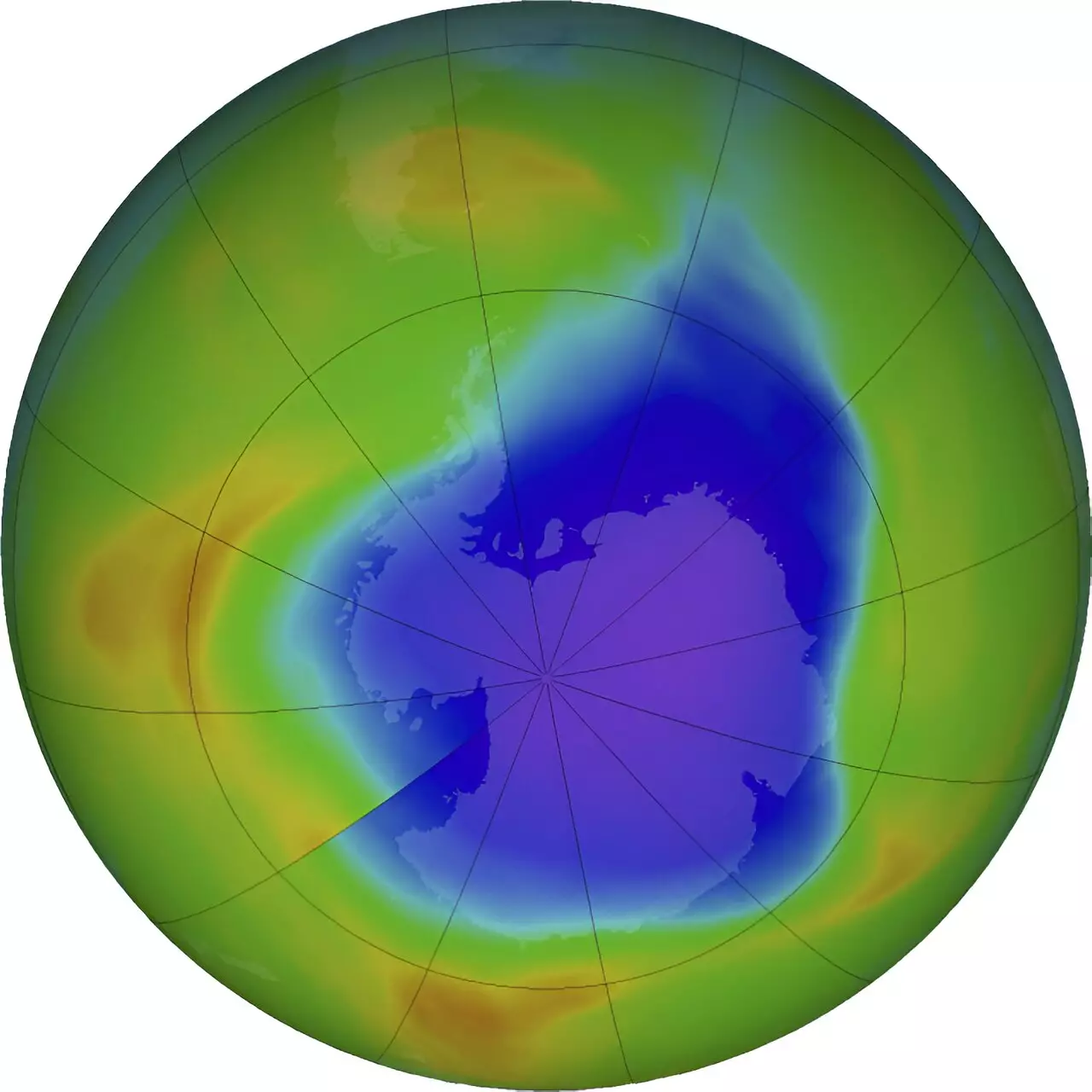

The ozone hole, a significant concern for the planet’s well-being, has been a topic of intense scientific study and public interest for several decades. With the recent eruption of an undersea volcano in the past year, scientists were anticipating a dramatic increase in the size of the ozone hole over Antarctica. However, their predictions were proven incorrect as this year’s ozone hole turned out to be relatively average in size compared to the last two decades. In this article, we will delve into the factors that contribute to the variation in the ozone hole and explore the surprising findings of NASA and the National Oceanic and Atmospheric Administration (NOAA).
From September to mid-October of this year, the ozone hole measured an average of 8.9 million square miles (23.1 million square kilometers), ranking as the 16th largest since satellite monitoring began in 1979. Its peak size reached 10 million square miles (26 million square kilometers), approximately equivalent to the area of North America. The ozone layer, composed of three oxygen atoms bonded together, resides between 5 to 30 miles high (8 to 50 kilometers) in the Earth’s atmosphere. This crucial layer shields the planet from harmful ultraviolet rays emitted by the sun, which can lead to skin cancer, cataracts, and the sterilization of crops.
The depletion of the ozone layer began several decades ago, primarily due to the release of chemicals from aerosol sprays and refrigerants. These compounds, known as ozone-munching chemicals, substantially contributed to the thinning of the ozone layer and the formation of a massive hole over Antarctica during September and October. The consequences of such a hole are extensive, particularly for the inhabitants of southernmost South America, exposing them to heightened risks of various health conditions.
At the beginning of the year, scientists hypothesized that the eruption of the Hunga Tonga Hunga Ha’apai volcano in January 2022 would exacerbate the ozone hole. The release of an unusually large quantity of water, 10% more than the average, into the southern hemisphere’s atmosphere was expected to provide a conducive environment for chemicals like chlorine and bromine to attack the ozone layer, ultimately enlarging the yearly fall hole. Surprisingly, this prediction did not materialize. Paul Newman, NASA’s ozone research leader, attributes this unexpected outcome to unforeseen circumstances.
Newman acknowledges that their understanding and computer simulations may have missed important details regarding the behavior of the water released into the atmosphere. It is now suggested that a significant portion of the water froze at higher altitudes and earlier than anticipated, leading to fewer clouds and liquid water for the ozone-munching chemicals to react upon. Additionally, localized weather conditions in the region may have played a role in shaping the size of the ozone hole, further complicating the accuracy of predictions.
Despite the concerns surrounding the ozone hole, there have been notable improvements over the years. The implementation of the Montreal Protocol in 1987, in which countries worldwide agreed to limit the production of ozone-depleting chemicals, has contributed to the partial recovery of the ozone layer. However, scientists emphasize that complete healing will require several decades of continued efforts and strict adherence to the guidelines outlined in the Montreal Protocol. The largest recorded ozone hole was observed in 2000, covering nearly 11.6 million square miles (29.9 million square kilometers).
The unexpected size of this year’s ozone hole despite the eruption of an undersea volcano highlights the complexity of the Earth’s atmospheric systems. The interplay of various factors, such as the behavior of water in the upper atmosphere and localized weather patterns, presents challenges for accurate predictions. Although progress has been made through international agreements and regulations, it is evident that there is still work to be done to safeguard the ozone layer and ensure a healthy planet for future generations. Continued research and cooperation among scientists worldwide are essential to unraveling the mysteries of the ozone hole and developing effective strategies for its preservation.
In the realm of software development, the ability to swiftly and accurately address bugs is…
The realm of quantum computing and communication is not just an abstract dream anymore; it…
In a remarkable leap for the field of material science, a collaborative research initiative has…
Throughout Earth's vast history, our planet has endured five major mass extinction events that reshaped…
Rainfall is a vital element of our planet’s hydrological cycle, yet many aspects of its…
On a night when the universe aligns, a mesmerizing phenomenon awaits: the appearance of the…
This website uses cookies.